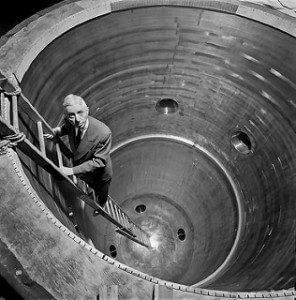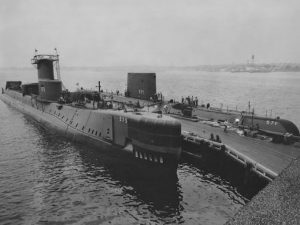Case studies in energy transitions
The examples of the British and US navies provide an interesting exploration of energy transitions. In both cases, the decisions were unilateral and subsequently replicated by other nations. But it was not obvious ex-ante that the decisions would be successful, and both carried risks. The energy substitutions were fit-for-purpose, fitted readily into incumbent vessel design, and were strategically valuable. In neither case was cost or the availability or natural resources the driver – indeed the substitute technologies were costlier and used less readily available natural resources.
British battleships
At the beginning of the 20th century, Britain was the leading coal nation, but lacked an indigenous oil supply. The British Navy’s decision to switch from coal to oil for its battleships was considered a high risk strategy (Dahl 2001; Yergin 2011). By 1911, Britain had already adopted oil for destroyers and submarines, but coal remained the principle fuel for larger vessels, especially battleships. Coal-fired steam was a well-known technology and accepted by marine engineers. It also had the benefit of supplementing armour by absorbing damage from exploding shells (Dahl 2001).
The prime supporter of a switch was Admiral Fisher, who adopted a more progressive stance than much of the Naval establishment. In time, he managed to persuade the then First Lord of the Admiralty, Winston Churchill, of the strategic benefits of oil. The impetus for the switch was the rapid expansion of the German Navy and the resulting Anglo-German naval race at the start of the 20th century.
Churchill was to later note,
‘the ordeal of coaling the ship exhausted the whole ship’s company. In wartime it robbed them of their brief period of rest; it subjected everyone to extreme discomfort … (on the other hand) with oil, a few pipes were connected with the shore or with a tanker and the ship sucked in its fuel with hardly a man having to lift a finger … oil could be stowed in spare places in a ship from which it could be impossible to bring coal.’ (Dahl 2001)

Although oil power was already being used, the British Navy’s complete shift to oil, particularly for battleships, placed Britain into the ‘early adopter’ category. As the leading coal nation without (then) indigenous oil production, arguably Britain had much to lose. Military equipment is structured around the incumbent energy sources; engineers and personnel are trained in the equipment and pitfalls are understood. There must be a compelling reason to shift to alternative energy sources. In this case, the perceived risk from the rapidly expanding German navy provided the impetus for change. The British war college had advised Churchill that a battleship would need a speed of 25 knots to outmanoeuvre and ‘cross the T’ of the German fleet – only oil power could provide this speed.
Once the decision had been made for a complete changeover, the issue of supply had to be resolved. The solution was to invest in the Anglo-Persian oil company (later to become BP), which was the first company to produce oil from Iranian oil fields. The British government took a 51 percent share of company stock, and negotiated a 20-year supply contract under attractive terms.
US submarines
In a later parallel set in the late 1940s at Oak Ridge National Laboratory, United States Captain (later Admiral) Rickover was exploring how nuclear power could be harnessed to power a submarine (Loewen 2012). The tactical benefit of a more powerful submarine that was able to remain submerged for extended periods far from port was obvious – diesel-electric submarines needed to resurface for charging and to return to port for refuelling.

Alvin Weinberg from Oak Ridge had recently patented the pressurised water reactor (PWR) and persuaded Rickover to develop the technology for a submarine. Rickover agreed and a contract was awarded to Westinghouse. Rickover also wanted a second option, and General Electric (GE) was awarded a contract to develop the (then) more advanced sodium cooled reactor (or liquid metal reactor – LMR).
Three reactors of each type were to be built – one was a land-based prototype for training and testing, one for a submarine, and one spare. The liquid metal reactor was installed in the USS Seawolf (SSN-575) and the pressurised water reactor in the Nautilus (SSN-571), with commissioning in 1957 and 1955 respectively. The LMR ran for several years, but had ongoing superheater problems, and eventually the decision was taken to adopt the PWR as the only reactor type, including a retrofit of SSN-575.

The advantages of nuclear propulsion for blue-ocean submarines eventually proved decisive with the major blue-water navies (China, France, India, Russia, US, UK) eventually adopting nuclear propulsion for their submarine fleet. From 1948, up to 2003, the US had commissioned 210 nuclear powered naval ships (NASA Office of Safety & Mission Assurance 2003). Some of the current propulsion units have extended the refuelling periods such that the power plant is expected to operate for the life of the vessel without refuelling. For example, the General Electric S9G reactor powering the US Virginia class submarine is designed to operate for 33 years, beyond the expected 30 year life of the vessel (Ragheb 2012). In total, there have been around 700 nuclear powered ships (civilian and military) globally (Royal Academy of Engineering 2013).
Summary
In the two cases considered, the decision to adopt an alternative power source was unilateral and driven by relatively few individuals – Fisher and Churchill in Britain; Weinberg and Rickover in the US. In both cases, the success of the transition provided a precedent for other military forces but it was not obvious ex-ante that the transition would be a success. In neither case was cost or the availability of natural resources the driver.
The cases of French nuclear, Brazilian ethanol and German solar are similar examples of the adoption of a particular technology as a matter of national energy policy. The long term benefits and costs of solar are yet to be determined, with the German program being extremely costly for Germany but providing a key plank for global price reduction. Indeed, German is not the natural home of solar but the cost reduction is benefiting regions with high solar insolation. Coal with carbon capture is generally assumed to be an important climate mitigation technology, including its future use with biofuels, but hasn’t yet found an influential faction of supporters. The interesting thing about all of these programs is that they provide counter examples of the endless discussions of carbon pricing and cost-benefit studies. Depending on the outcome of the German Energiewende and other national energy policies, the future of national energy policies may end up being determined much more by governments ‘picking winners’ than market based instruments.
References
Alexander, W.R.J. 2013, ‘The defence-debt nexus: Evidence from the high-income members of NATO’, Defence and Peace Economics, vol. 24, no. 2, pp. 133-145.
Dahl, E.J. 20
01, Naval innovation: from coal to oil, DTIC Document.
Kennedy, P. 2010, The rise and fall of the great powers, Vintage.
Loewen, E.P. 2012, ‘The USS Seawolf Sodium-Cooled Reactor Submarine’, paper presented to American Nuclear Society local section address.
NASA Office of Safety & Mission Assurance 2003, Progress Report |, Naval Reactors Safety Assurance.
Ragheb, M. 2012, ‘Nuclear Marine Propulsion’, University of Illinois at Urbana-Champaign.
Yergin, D. 2011, The prize: The epic quest for oil, money & power, Simon and Schuster.
